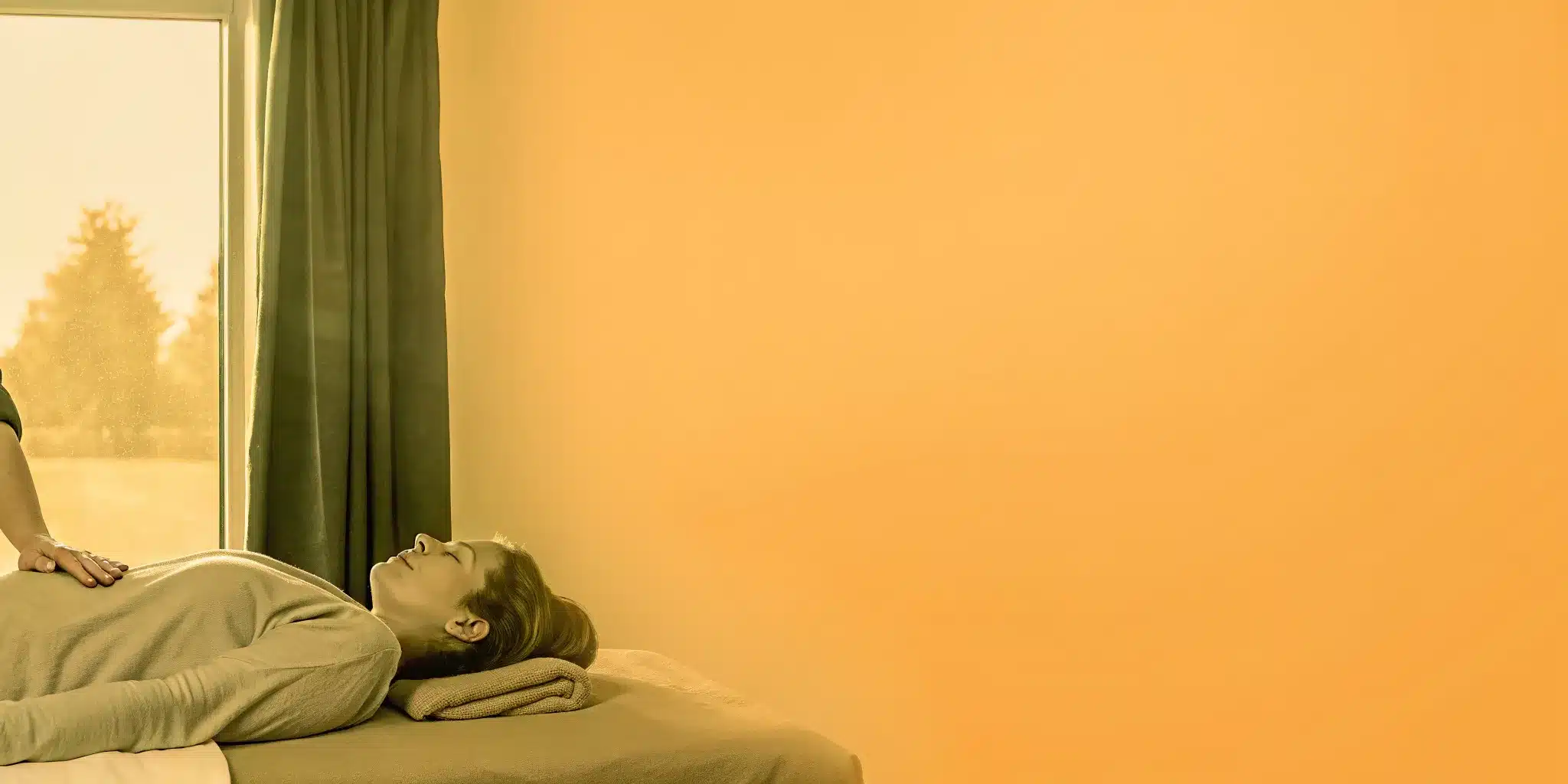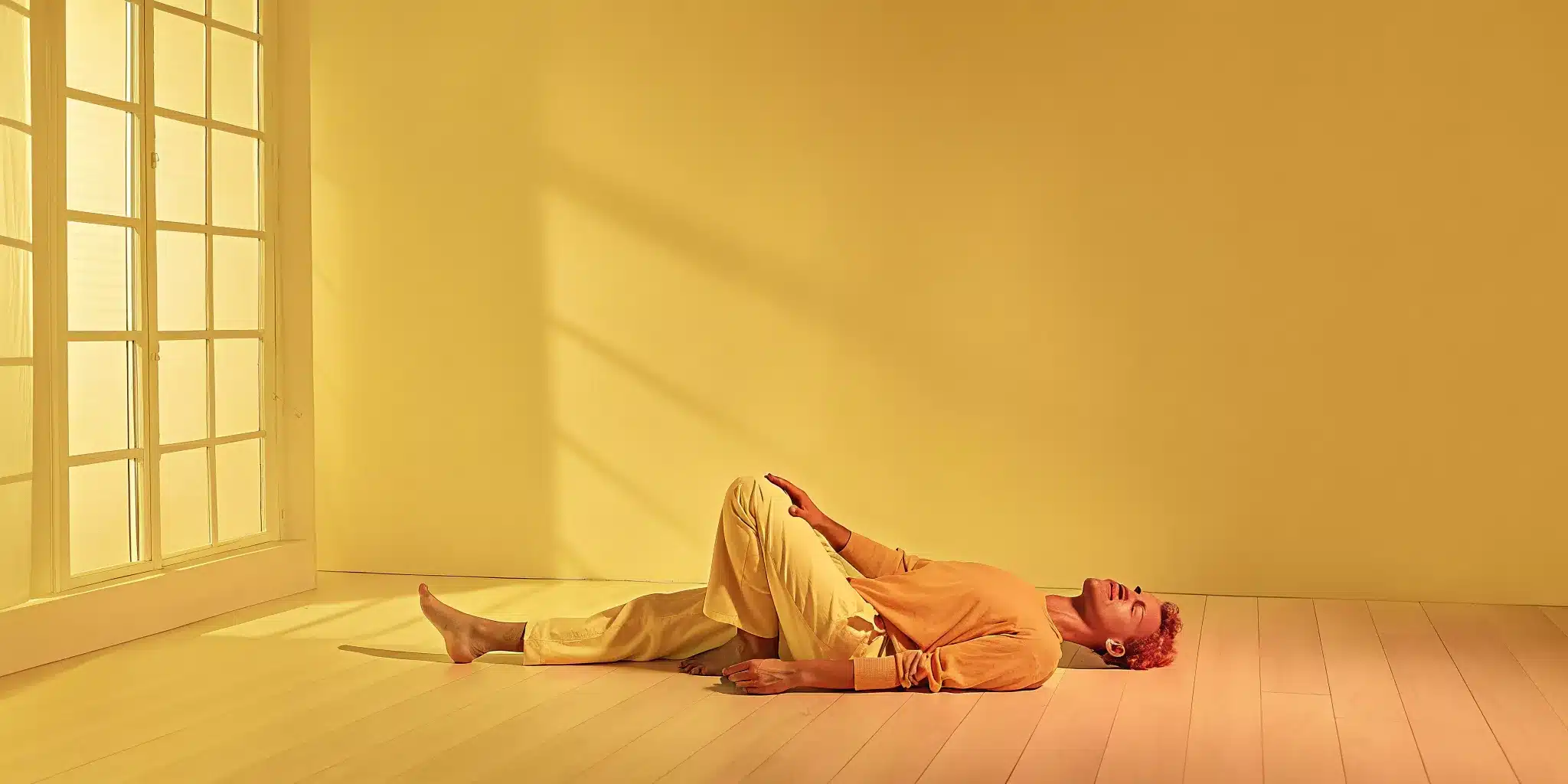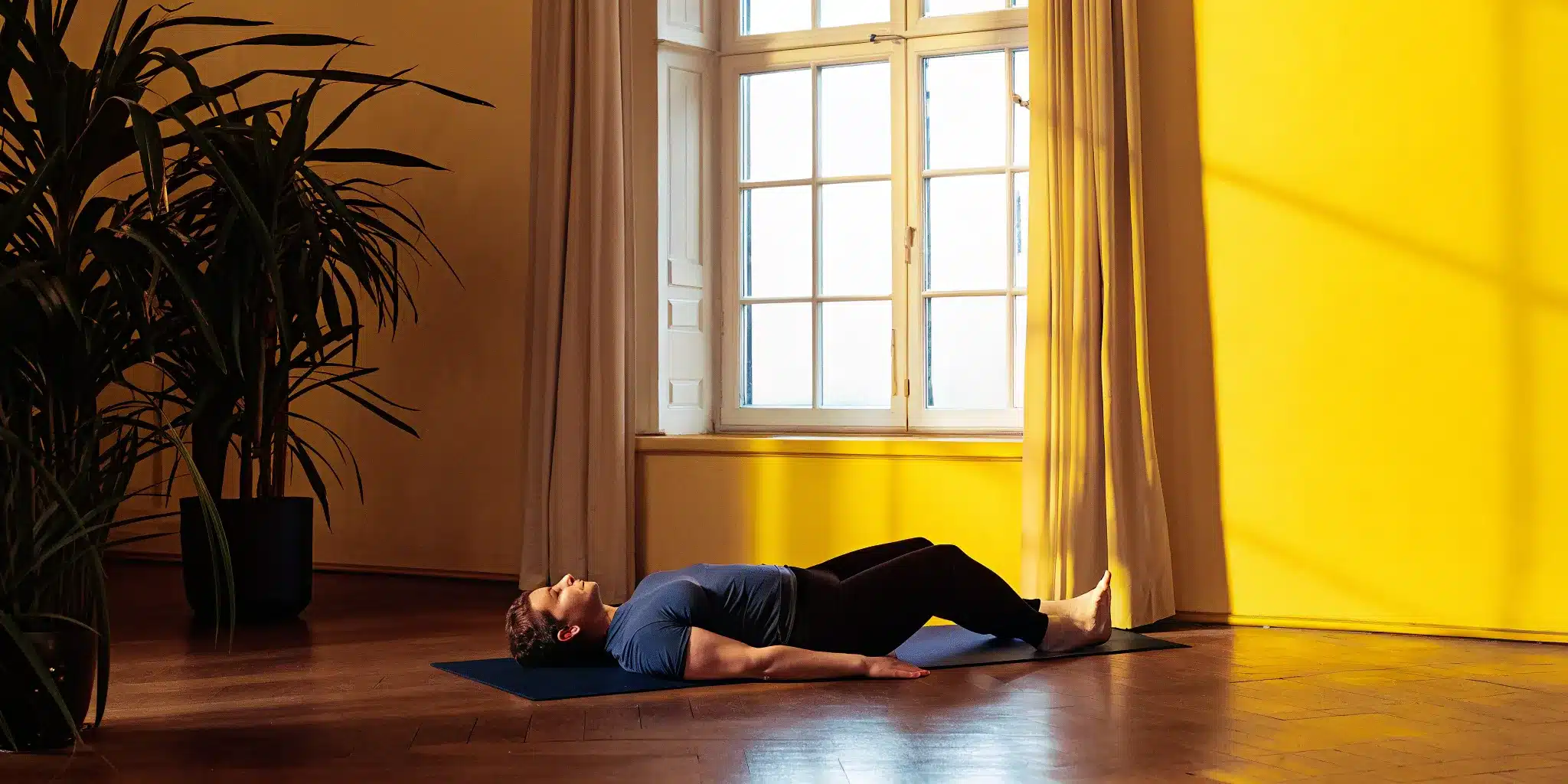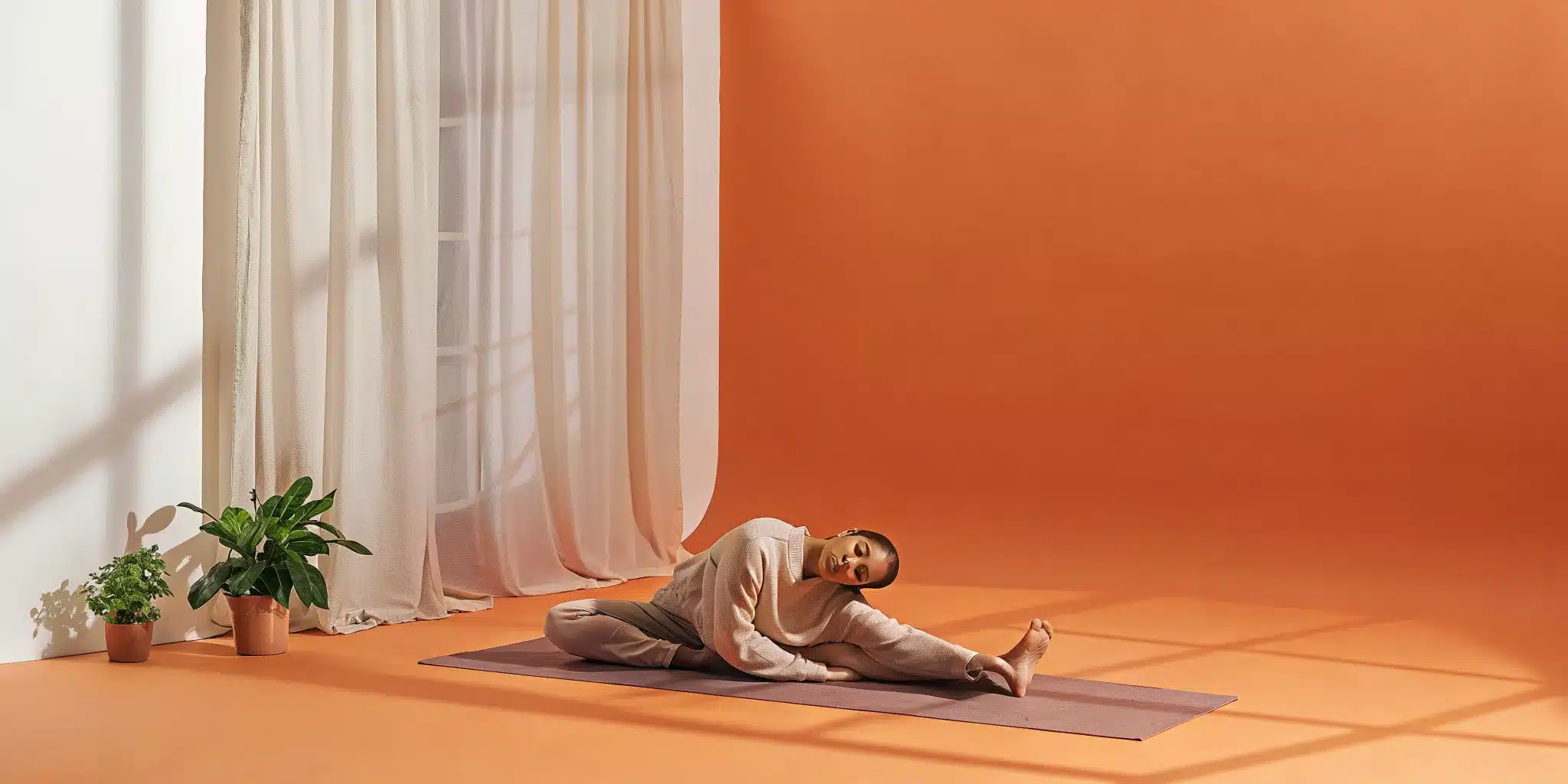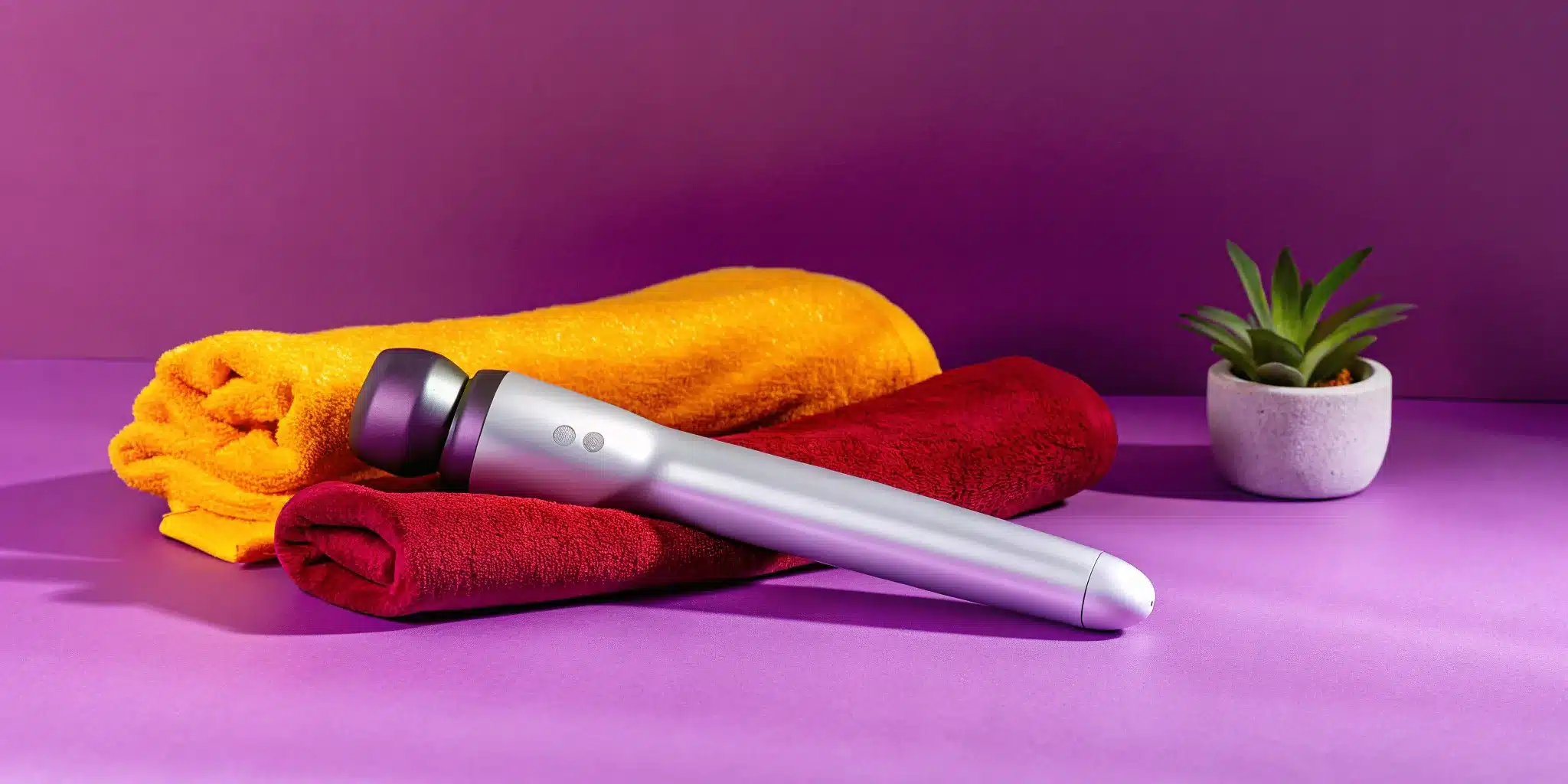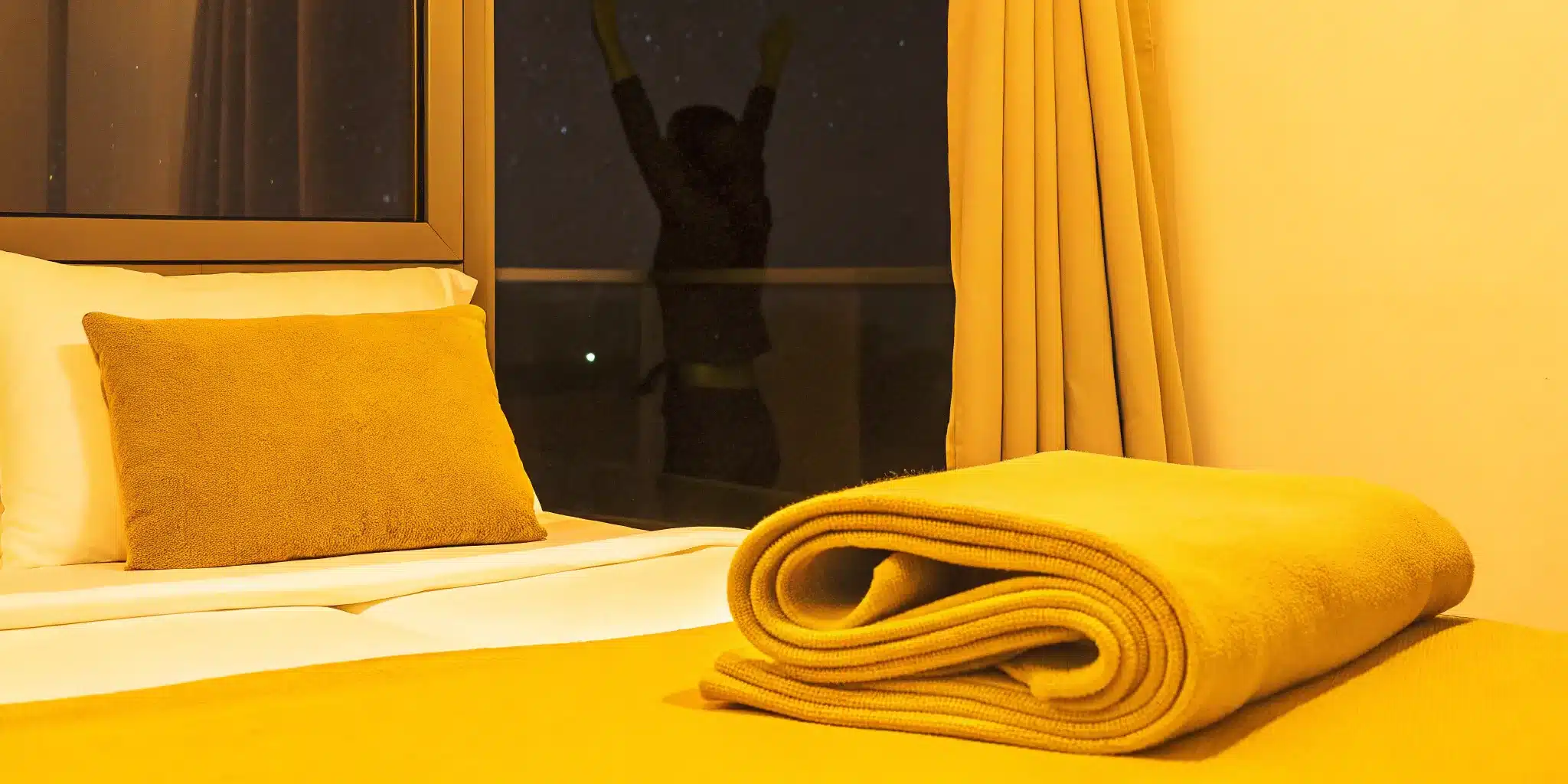That constant feeling of tightness in your hamstrings, calves, or quads isn’t something you just have to live with. While it can feel like a persistent problem, you have the power to create real, lasting change. The key is moving beyond temporary fixes and building a consistent maintenance plan that supports your body’s mobility. This guide is your roadmap. We’ll walk you through everything from effective stretching and self-massage techniques to the simple daily habits that prevent stiffness from returning. You’ll learn how to loosen tight muscles in legs with a proactive approach that puts you in control of your comfort and well-being.
Key Takeaways
- Go beyond basic stretching for real relief: While stretching is important, lasting relief often requires a combined approach. Incorporate self-massage with a foam roller, use heat therapy to soothe chronic stiffness, and consider professional help to release stubborn knots.
- Your daily routine is your best defense against tightness: Small, consistent habits make the biggest impact. Prevent stiffness from returning by staying hydrated, taking short movement breaks throughout the day, and prioritizing quality sleep for muscle recovery.
- Know when to seek professional help: If at-home remedies aren’t cutting it, don’t hesitate to see a professional. Assisted stretching can target the root cause of your tightness, offering a personalized path to improved mobility and lasting comfort.
Why Are My Leg Muscles So Tight?
If you’ve ever felt a nagging, persistent tightness in your legs, you know how frustrating it can be. It can turn simple movements like bending down to tie your shoes or getting out of a chair into a stiff, uncomfortable process. You might stretch and stretch, only to feel that familiar tightness creep back in hours later. Understanding why your leg muscles are so tight is the first step toward finding lasting relief. It’s not just about feeling better; it’s about reclaiming your freedom of movement and getting back to the activities you love without being held back by discomfort. The reasons for tight legs can range from your daily habits to how your body responds to stress, but the good news is that they are almost always addressable.
What Causes Tight Leg Muscles?
So, what’s really going on? Often, tight leg muscles are your body’s response to what you do every day. If you’re active, overuse from running or workouts without proper recovery can cause muscles to shorten and tighten. On the flip side, sitting for long periods—whether at a desk or on the couch—can cause your hamstrings and hip flexors to become chronically tight. Past injuries can also leave behind scar tissue that limits flexibility. Even things you might not connect to your legs, like poor posture or daily stress, can contribute. When you’re stressed, your body tenses up, and that tension can settle in your largest muscle groups, including your legs.
Signs Your Leg Muscles Are Too Tight
Beyond just feeling “tight,” there are specific signs that your muscles are calling for help. You might notice a decreased range of motion, like not being able to straighten your leg fully or squat as deeply as you used to. A constant, dull ache or a pulling sensation in your hamstrings, quads, or calves is another common clue. Sometimes, the tightness can even lead to pain in other areas, like your lower back or knees, as your body tries to compensate. While most tightness is manageable, you should pay attention to red flags. If you experience sudden tightness accompanied by swelling, redness, severe pain, numbness, or weakness, it’s best to check in with a doctor to rule out a more serious issue.
How Tight Legs Affect Your Daily Life
Tight leg muscles aren’t just a minor annoyance; they can have a real impact on your quality of life. When your legs are constantly tight, simple activities like walking up stairs, playing with your kids, or even just standing for a while can become painful chores. Over time, this chronic tension can cause the affected muscles to become weaker. This forces other muscles to work harder to pick up the slack, leading to muscle imbalances and increasing your risk of injury elsewhere in your body, like your hips or back. It’s a chain reaction that can limit your mobility and keep you from feeling your best day-to-day.
Stretches That Actually Work for Tight Legs
If your legs feel constantly stiff and achy, stretching can feel like a chore you’d rather skip. But the right movements can make a world of difference, offering real relief that helps you move more freely throughout your day. The key isn’t to force yourself into painful positions, but to gently and consistently encourage your muscles to release tension. Think of it as a conversation with your body, not a battle.
When you find the stretches that target your specific areas of tightness, you’ll start to notice the benefits almost immediately. We’re going to walk through a few simple, effective stretches for the major muscle groups in your legs. These aren’t complicated yoga poses—they are straightforward movements you can do almost anywhere. The goal is to create a simple routine that you can stick with, because consistency is what truly creates lasting change and helps you achieve better mobility every day. Remember to listen to your body, breathe through each movement, and never push into sharp pain.
Start with a Dynamic Warm-Up
Before you dive into holding a deep stretch, you need to warm up your muscles. Stretching cold muscles is not only less effective, but it can also lead to injury. You want to get some blood flowing first to make the muscle tissue more pliable and ready to lengthen.
A warm-up doesn’t have to be complicated. Just spend three to five minutes doing some light movement. Marching in place, doing some gentle leg swings, or even taking a brisk walk around the block will do the trick. This simple step signals to your body that it’s time to move, preparing your muscles and joints for the focused stretching ahead. It’s a small investment of time that pays off big in both safety and results.
Key Stretches for Hamstrings and Quads
Your hamstrings (back of the thigh) and quadriceps (front of the thigh) are two of the largest muscle groups in your legs, and they’re often the main culprits behind that feeling of tightness.
For your hamstrings, try a simple standing stretch. Stand with your feet hip-width apart, then place one heel on a low step or curb. Keeping that leg straight, hinge forward at your hips until you feel a gentle pull in the back of your thigh.
For your quads, the classic standing quad stretch works wonders. Stand near a wall or chair for balance, grab your right foot with your right hand, and gently pull your heel toward your glute. You should feel the stretch along the front of your thigh. Hold each stretch for 30-60 seconds, and repeat two to three times per leg.
Don’t Forget Your Calves and Hip Flexors
It’s easy to focus on the big thigh muscles, but your calves and hip flexors play a huge role in lower body mobility. Tight calves can affect your ankles and feet, while tight hip flexors—often a result of sitting for long periods—can contribute to lower back pain.
To stretch your calves, face a wall and place your hands on it for support. Step one foot back, keeping the leg straight and the heel on the floor. Gently lean forward until you feel a stretch in your calf.
For your hip flexors, a kneeling lunge is perfect. Kneel on one knee (use a cushion if you need to) and place the other foot flat on the floor in front of you. Gently push your hips forward while keeping your back straight. Hold these for 30 seconds on each side to help relieve your tight leg muscles.
Focus on Proper Form
How you stretch is just as important as which stretches you do. Poor form can make a stretch ineffective or even cause an injury. The number one rule is to never bounce. Bouncing can create tiny tears in the muscle, which leads to more stiffness. Instead, ease into each stretch and hold it steady.
Breathe deeply and relax into the position. You should feel a gentle tension, not sharp pain. If it hurts, you’ve gone too far. Back off a little until the feeling is manageable. Aim to do these stretches after a workout when your muscles are already warm, or make it a daily habit on its own. Holding each stretch for up to a minute gives your muscles enough time to truly release.
Release Tension with Massage
Stretching is a crucial part of keeping your legs flexible, but sometimes you’ll encounter stubborn knots that just won’t release. When your muscles feel persistently tight and sore, that’s a sign you might need a more direct approach. This is where massage comes in as a powerful partner to your stretching routine. Think of it as a way to manually work through the adhesions and trigger points in your muscle fibers that cause that deep, nagging ache. By applying targeted pressure, massage helps to physically break up these tight spots.
This process does more than just feel good. It significantly increases blood flow to the targeted muscles, delivering a fresh supply of oxygen and nutrients that are essential for tissue repair and recovery. At the same time, it helps flush out metabolic waste products that can accumulate in overworked muscles, contributing to soreness and stiffness. The great thing about massage is its versatility. You can use simple tools at home for daily maintenance or seek out a professional for more intensive, deep-tissue work. Combining massage with stretching can be a game-changer for your leg muscles, helping you move more freely and with less pain.
How to Use a Foam Roller
If you have a foam roller collecting dust in a corner, it’s time to put it to work. Using a foam roller is a form of self-myofascial release, which is just a technical way of saying self-massage. To start, place the roller on the floor and position the tight part of your leg on top of it. Use your arms to support your body as you gently roll back and forth over the targeted area for about 60 to 90 seconds. You’re looking for a “hurts so good” sensation—if you feel sharp pain, ease up. Effective foam rolling can make a huge difference in loosening up your hamstrings, quads, and calves.
Simple Self-Massage Techniques
You don’t always need special equipment to get relief. Your own hands can be powerful tools for working out kinks in your leg muscles. Sit in a comfortable position where you can easily reach your legs. Use your thumbs to apply firm, steady pressure to tight spots, or use your knuckles to knead larger muscles like your quads. You can also try using a tennis or lacrosse ball for more targeted pressure. Just place the ball on the floor, position your muscle over it, and let your body weight do the work. These simple self-massage techniques are perfect for a quick release after a long day.
The Benefits of Professional Massage
While self-massage is great for maintenance, nothing quite compares to the expertise of a professional massage therapist. A trained professional understands anatomy and can pinpoint the source of your tightness, which might be in a spot you’d never think to check. They can apply specific techniques and the right amount of pressure to release deep, chronic knots that are difficult to address on your own. Even a brief, 20-minute session focused on your legs can significantly reduce muscle tension and improve your range of motion. It’s an investment in your body that can provide lasting relief.
When to Get a Massage for Best Results
So, how do you know when to book an appointment? If you’ve been consistently stretching and trying self-massage at home but your muscle tightness isn’t improving, it’s time to see a professional. Persistent pain or tightness that interferes with your daily activities is a clear sign that you need a more targeted approach. A professional can not only provide immediate relief but also help you understand the underlying cause of your muscle tension. If home treatments aren’t cutting it, consulting a therapist is the next logical step to get you back on track.
Use Heat and Cold Therapy
When your legs feel tight and achy, reaching for a heating pad or an ice pack is a classic move for a reason—it works. Using heat and cold, also known as thermotherapy, is one of the simplest and most effective ways to manage muscle pain and stiffness at home. The key is knowing which one to use and when. Heat helps to increase blood flow, relax tense muscles, and soothe chronic aches, making it a great prep step before you stretch. Cold, on the other hand, is your go-to for new injuries and inflammation, as it helps reduce swelling and numb sharp pain.
Think of it this way: heat is for muscles that feel chronically stiff and overworked, while cold is for muscles that are acutely inflamed or injured. By understanding how to use each method, you can give your legs the specific relief they need. You can even combine them for a powerful recovery-enhancing effect. Let’s walk through how to use heat and cold therapy safely and effectively to get your legs feeling loose and comfortable again.
When to Use Heat
If your leg muscles feel chronically tight, stiff, or sore, heat is your best friend. Applying warmth helps increase circulation, bringing more oxygen and nutrients to the muscle tissue. This increased blood flow can help relax tight muscles and ease the kind of deep ache that comes from overuse or tension. It’s especially helpful before stretching because it makes your muscles more pliable and ready to move.
Try using a heating pad, taking a warm bath, or standing under a hot shower for about 15 to 20 minutes. Focus the heat on the tightest areas, like your hamstrings or quads. This simple step can make a huge difference in your flexibility and provide some much-needed comfort.
When to Use Cold
Cold therapy is the perfect solution for acute pain, swelling, or inflammation. If you’ve just finished an intense workout, tweaked a muscle, or are dealing with a new injury, applying cold can work wonders. The cold temperature causes blood vessels to constrict, which helps reduce swelling and inflammation. It also has a numbing effect, which can provide immediate relief from sharp pain.
To use cold therapy, wrap an ice pack or a bag of frozen vegetables in a thin towel and apply it to the sore area for 10 to 15 minutes at a time. Never place ice directly on your skin. This method is best used within the first 48 hours of an injury to manage swelling and pain effectively.
How to Combine Heat and Cold Safely
For a more advanced recovery technique, you can alternate between heat and cold. This method, known as contrast therapy, creates a pumping action in your blood vessels as they expand and constrict. This process can help flush out metabolic waste and deliver fresh, oxygenated blood to your muscles, which may speed up recovery. It’s a great option for dealing with post-workout soreness that isn’t tied to a specific, acute injury.
A simple way to try contrast therapy is to apply heat for about three minutes, then switch to cold for one minute. Repeat this cycle three to four times, always ending with cold.
Important Safety Tips
Whether you’re using heat or cold, safety should always come first. Your body knows best, so pay close attention to how you feel. If any treatment causes more pain, it’s time to stop. When using heat, make sure it’s comfortably warm, not scalding, to avoid burns. Never fall asleep with a heating pad on.
For cold therapy, always use a barrier, like a towel, between the ice pack and your skin to prevent frostbite. It’s also important to limit your sessions to 15 minutes at a time. Following these simple safety measures will ensure you get all the benefits of heat and cold therapy without any of the risks.
Find Relief with Professional Help
Sometimes, no matter how much you stretch or foam roll, that stubborn tightness just won’t go away. If you feel like you’ve hit a wall with at-home remedies, it might be time to call in a professional. Getting expert help isn’t a sign of failure—it’s a smart move toward understanding your body better and finding lasting relief. A trained professional can do more than just guide you through stretches; they can pinpoint the root cause of your tight leg muscles, whether it’s from muscle overuse, weakness in other areas, or even your posture.
Think of it like this: you can try to fix a leaky pipe yourself, but a plumber has the tools and expertise to find the source of the leak and fix it for good. Similarly, a stretching professional or physical therapist has a deep understanding of anatomy and movement. They can identify which specific muscles are causing trouble and create a targeted plan to release them. This personalized approach is often the key to finally loosening those chronically tight muscles and getting back to moving comfortably and without pain.
The Power of Assisted Stretching
So, what exactly is assisted stretching? It’s a technique where a trained professional helps you move your body through a series of stretches. This isn’t about pushing you into painful positions; it’s about using their expertise to isolate specific muscles and achieve a deeper, more effective stretch than you could on your own. They can stabilize other parts of your body to ensure the right muscle is being targeted, helping to correct underlying issues like muscle imbalances. This hands-on approach helps relax your nervous system, allowing your muscles to release tension more fully. The result is often improved flexibility and a greater range of motion that you can feel long after your session ends.
What to Expect at Your First Session
Walking into your first session can feel a little intimidating, but it’s really just a conversation about your body. It will likely start with an assessment. Your practitioner will ask about your lifestyle, activity level, and where you’re feeling pain or tightness. They’ll also guide you through some simple movements to evaluate your flexibility and identify which muscles are restricted. Based on this initial evaluation, they’ll develop a personalized treatment plan tailored to your specific needs. This isn’t a one-size-fits-all routine; it’s a strategy designed just for you, focusing on the areas that will give you the most relief and help you reach your mobility goals.
How to Find the Right Professional
Finding the right person to work with is crucial for getting the results you want. Start by looking for professionals who specialize in muscle tightness, mobility, or sports therapy. Certifications in fields like physical therapy, athletic training, or specialized stretching techniques are a good indicator of expertise. Don’t be afraid to do a little research. Check online reviews and testimonials to see what other clients’ experiences have been like. You want to find someone you feel comfortable with—a partner who listens to your concerns and explains their approach clearly. A great professional will empower you with knowledge about your own body.
How Often Should You Go?
How often you should see a professional really depends on your individual situation. During your first visit, your practitioner will recommend a schedule based on the severity of your muscle tightness and your personal goals. If you’re dealing with chronic pain or a specific injury, you might start with more frequent sessions, perhaps once or twice a week. As your muscles begin to loosen and your mobility improves, you may be able to scale back to bi-weekly or monthly maintenance sessions. The key is consistency. Regular professional sessions, combined with the stretches you do at home, are what create lasting change and help prevent future tightness from returning.
How to Prevent Tight Legs
While stretching and massage are fantastic for finding immediate relief, the real secret to long-term comfort is prevention. Think of it as proactive care for your body. By building a few simple, consistent habits into your daily life, you can stop leg tightness before it even starts. These small adjustments don’t require a major overhaul of your routine, but they make a world of difference in how your legs feel day in and day out.
Stay Hydrated and Eat Well
Think of your muscles like well-oiled machines—they need the right fuel and fluid to run smoothly. Dehydration is a common culprit behind cramps and tightness, so aim to drink plenty of water throughout the day. For most adults, that’s at least 64 ounces. Your diet plays a huge role, too. Certain minerals are essential for muscle function, and a deficiency can lead to muscle stiffness. Make sure you’re getting enough calcium and magnesium by including foods like dark leafy greens, nuts, bananas, and dairy in your meals. It’s a simple way to nourish your muscles from the inside out.
Build Daily Movement into Your Routine
If you spend most of your day sitting, your leg muscles can become shortened and tight. The key is to break up long periods of inactivity with what I like to call “movement snacks.” Set a reminder to get up and move around for a few minutes every hour. You don’t need to do a full workout; a short walk around the office, a few calf raises while you wait for your coffee, or some simple squats can do wonders. This regular movement keeps your blood flowing and reminds your muscles to stay loose and flexible, helping you loosen tight muscles before they become a problem.
Prioritize Sleep and Recovery
Never underestimate the power of a good night’s sleep. While you’re resting, your body is hard at work repairing tissues and reducing inflammation. This is when true muscle repair happens. Aiming for seven to nine hours of quality sleep each night gives your leg muscles the time they need to recover from the day’s activities. If you’re constantly feeling sore and tight, take a look at your sleep schedule. Treating rest as a non-negotiable part of your wellness routine is one of the most effective ways to keep your muscles happy and prevent chronic tightness from setting in.
Choose the Right Shoes
Your feet are your foundation, and what you put on them has a direct impact on your legs. Shoes that lack proper support can alter your walking pattern, forcing certain muscles in your legs to overcompensate and tighten up. Take a look at your everyday footwear. Are they worn out? Do they offer good arch support? Investing in supportive shoes that fit well can correct your alignment and distribute pressure more evenly, preventing strain on your calves, hamstrings, and quads. Remember to replace your shoes when they show signs of wear to ensure you’re always getting the support you need.
Tools and Methods for Faster Recovery
Finding what works for your body is key to long-term relief from tight muscles. Beyond stretching, a few simple tools and methods can make a huge difference in how your legs feel day-to-day. Think of this as building your personal recovery toolkit—a collection of go-to strategies you can use whenever you feel that familiar tightness creeping in. You don’t need a lot of fancy gadgets or complicated routines. Often, the most effective solutions are the simplest ones.
The goal is to support your body’s natural healing process. By incorporating a few of these practices into your week, you can help your muscles relax, reduce soreness, and improve your overall mobility. It’s about being proactive rather than reactive. Instead of waiting for the pain to become unbearable, you can use these tools to maintain flexibility and keep your muscles happy. This approach helps you stay ahead of the tightness, making your daily activities, from walking the dog to climbing stairs, feel much easier and more comfortable.
Essential Recovery Equipment
You don’t need a home gym to get relief. One of the most effective and affordable tools is a simple foam roller. Using a foam roller is a form of self-massage that helps release knots and loosen tight muscles. To get the most out of it, focus on major muscle groups in your legs like your calves, quads, and hamstrings. The key is to roll slowly and intentionally. When you find a tender spot, pause and hold gentle pressure for about 20-30 seconds. This gives the muscle time to relax and release. A few minutes of foam rolling each day can significantly improve your flexibility and reduce soreness.
Natural Ways to Soothe Muscles
Sometimes, the best remedies are the simplest. Applying gentle heat is a fantastic way to soothe sore, tight muscles. A warm heating pad or a hot water bottle can increase blood flow to the area, which helps relax the muscle fibers and ease pain. Taking a warm bath is another great option that provides full-body relaxation. For an added benefit, try adding Epsom salts to your bath. They are rich in magnesium, a mineral that plays a crucial role in muscle function and can help reduce tightness and cramping. These simple heat therapy techniques can be a comforting part of your evening wind-down routine.
Create Your Personal Recovery Plan
Consistency is more important than intensity. A personal recovery plan doesn’t have to be complicated; it just needs to be something you can stick with. Start by incorporating regular stretching into your daily routine. Even five to ten minutes in the morning or before bed can make a big difference. Pay attention to which areas feel the tightest and focus your efforts there. Your plan should be flexible. On days you feel extra sore, maybe you opt for a warm bath. On days you feel more energetic, you might spend a little more time with your foam roller. The best plan is one that targets your specific needs and fits seamlessly into your life.
How to Track Your Progress
How do you know if your efforts are paying off? Tracking your progress can be as simple as noticing how you feel. Can you bend down to tie your shoes with a little more ease? Do you feel less stiffness when you get out of bed in the morning? These small improvements are signs that you’re on the right track. You could also keep a simple journal, noting your pain levels or how your body feels after certain activities. Making stretching a daily habit, even for a few minutes, is a great way to stay in tune with your body and monitor your increasing mobility over time. Remember, progress isn’t always a straight line, so celebrate the small wins along the way.
Create a Long-Term Maintenance Plan
Finding relief from tight leg muscles is a great first step, but keeping that feeling of freedom requires a consistent plan. Think of it less as a short-term fix and more as a new set of habits that support your body every single day. A long-term maintenance plan isn’t about adding hours of work to your schedule; it’s about weaving small, intentional actions into your existing routine. By combining gentle morning movements, smart post-workout recovery, a calming evening wind-down, and simple lifestyle adjustments, you create a powerful system for preventing tightness before it starts.
This approach helps you stay ahead of chronic pain and stiffness, allowing you to maintain your mobility and feel your best. Consistency is your greatest ally here. A few minutes of focused care each day will have a much bigger impact than one long session every few weeks. Over time, these practices become second nature, helping you build a more resilient body that moves with ease and comfort. This plan is your personal roadmap to lasting relief and better overall well-being.
Your Morning Mobility Routine
How you start your day can make all the difference for your leg muscles. Instead of rolling out of bed and into a state of stiffness, take five to 15 minutes to gently wake up your body. Begin with three to five minutes of light movement, like marching in place or swinging your arms, to get your blood flowing. From there, you can move into some gentle stretches. Incorporating practices like Yin or restorative yoga can help release tension in your connective tissues, while more dynamic movements help with muscle balance. Remember, a short session every single morning is far more effective than a long, infrequent one. This simple routine prepares your muscles for the day ahead and sets a positive tone for your well-being.
Recovering After a Workout
What you do after exercise is just as important as the workout itself. To prevent that familiar post-workout stiffness, make stretching a non-negotiable part of your cooldown. A foam roller can be your best friend here. Spend some time slowly rolling out your calves, quads, hamstrings, and IT band, pausing for 20 to 30 seconds on any particularly tender spots. This helps release knots and improve blood flow. For an even better stretch, try applying a warm pack or taking a warm shower for about 15 minutes beforehand. The heat makes your muscles more pliable and receptive to stretching, helping you get a deeper, more effective release and sidestep unnecessary muscle stiffness.
Wind Down with an Evening Routine
Creating a simple evening routine can help your leg muscles relax and repair while you sleep. A warm bath is a perfect way to start, as the heat helps improve circulation and soothe general tightness. If you’re dealing with a new injury or notice any swelling, applying an ice pack wrapped in a cloth for 10 to 15 minutes can help reduce inflammation. For persistent soreness, you can even alternate between heat and cold, applying each for about 20 minutes at a time. This calming ritual not only helps your muscles recover from the day but also signals to your body that it’s time to rest, promoting deeper, more restorative sleep.
Simple Lifestyle Changes for Lasting Relief
Long-term relief from tight muscles often comes down to your daily habits. Staying hydrated is fundamental, as water is essential for healthy muscle function. Aim to drink plenty of water throughout the day. Your diet also plays a key role. Make sure you’re eating foods rich in calcium and magnesium—like dark leafy greens, nuts, and bananas—to support muscle health. Finally, be mindful of how much you sit. If you have a desk job, make a point to get up, stretch, and walk around for a few minutes every hour. These small adjustments reduce strain on your legs and are crucial for preventing stiffness from setting in.
Related Articles
- How to Do PNF Stretching Exercises for Hamstrings – STRETCHMED
- Muscle Strain Treatment: A Comprehensive Guide – STRETCHMED
- Benefits of a 1-on-1 Stretch Therapist: Improve Flexibility & Reduce Pain – STRETCHMED
Frequently Asked Questions
Why do my legs still feel tight even though I stretch regularly? This is a common frustration, and it often means that stretching is only one piece of your personal puzzle. If you’re stretching consistently but not feeling lasting relief, it’s time to look at other factors. You might need to incorporate self-massage with a foam roller to break up stubborn knots that stretching alone can’t release. Also, consider your daily habits—are you sitting for long periods without breaks, not drinking enough water, or wearing unsupportive shoes? All of these can contribute to chronic tightness. Sometimes, the issue is a muscle imbalance that requires a more targeted approach, which is where professional help can make a huge difference.
What’s the difference between a “good stretch” feeling and pain I should stop for? This is such an important question. A good, effective stretch should feel like a gentle pulling or tension in the belly of the muscle. You might feel some mild discomfort as the muscle lengthens, but it should be a sensation you can breathe through and relax into. Pain, on the other hand, is sharp, stabbing, or electric. If you feel any of those sensations, or if the feeling is concentrated in a joint rather than the muscle, you’ve gone too far. The goal is to communicate with your body, not force it, so always back off if you feel actual pain.
Should I use heat or ice for my tight leg muscles? The best choice depends on what your muscles are telling you. Think of heat as a tool for relaxing chronic stiffness and general aches. Applying a heating pad or taking a warm bath before you stretch can help make your muscles more pliable and receptive to movement. Ice is your go-to for acute situations, like after a very intense workout or if you’ve tweaked something. It helps reduce inflammation, swelling, and sharp pain. A simple rule to remember is: heat for stiffness, ice for injury.
How often should I be stretching to see a real difference? Consistency is far more important than intensity or duration. You will see much better results from stretching for 10 minutes every day than from doing one long, 60-minute session once a week. Making stretching a daily habit allows your muscles to adapt and maintain their flexibility. Try incorporating it into your morning or evening routine. Over time, this consistent practice helps retrain your muscles and nervous system, leading to lasting improvements in your mobility and a reduction in tightness.
When should I consider getting professional help instead of just managing it myself? If you’ve been consistently trying at-home remedies like stretching, foam rolling, and heat therapy for a few weeks and aren’t seeing any improvement, it’s a good time to seek professional guidance. You should also see a professional if the tightness is severe enough to interfere with your daily activities or if it’s accompanied by persistent pain. A trained expert can identify the root cause of your issue, which might be something you can’t spot on your own, and provide targeted assisted stretching to give you more significant and lasting relief.

